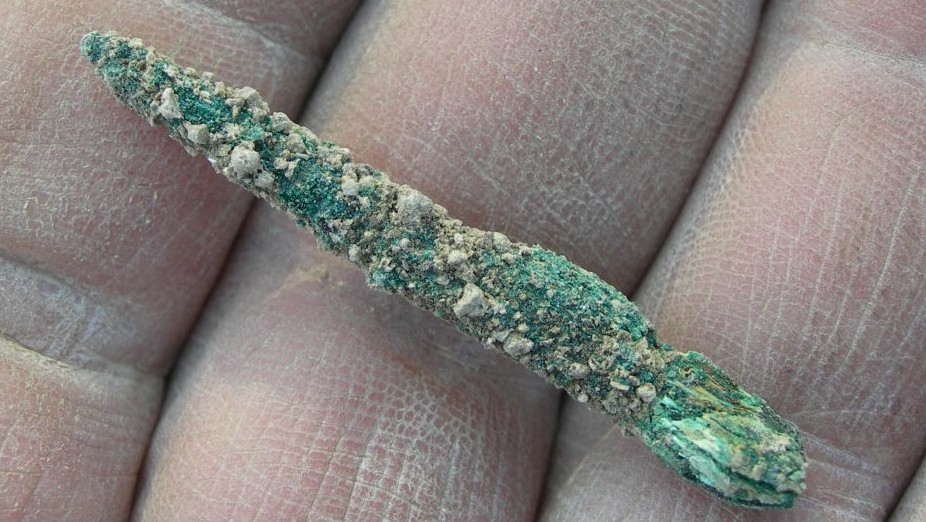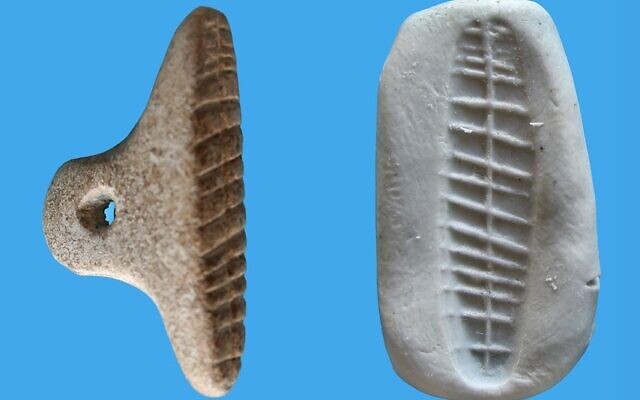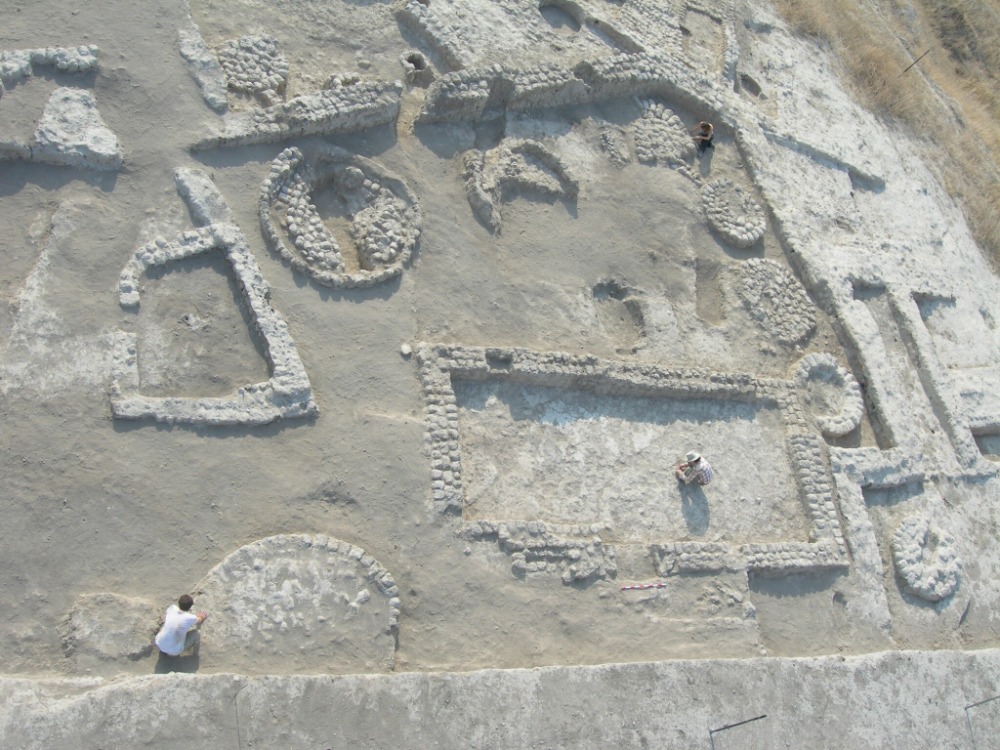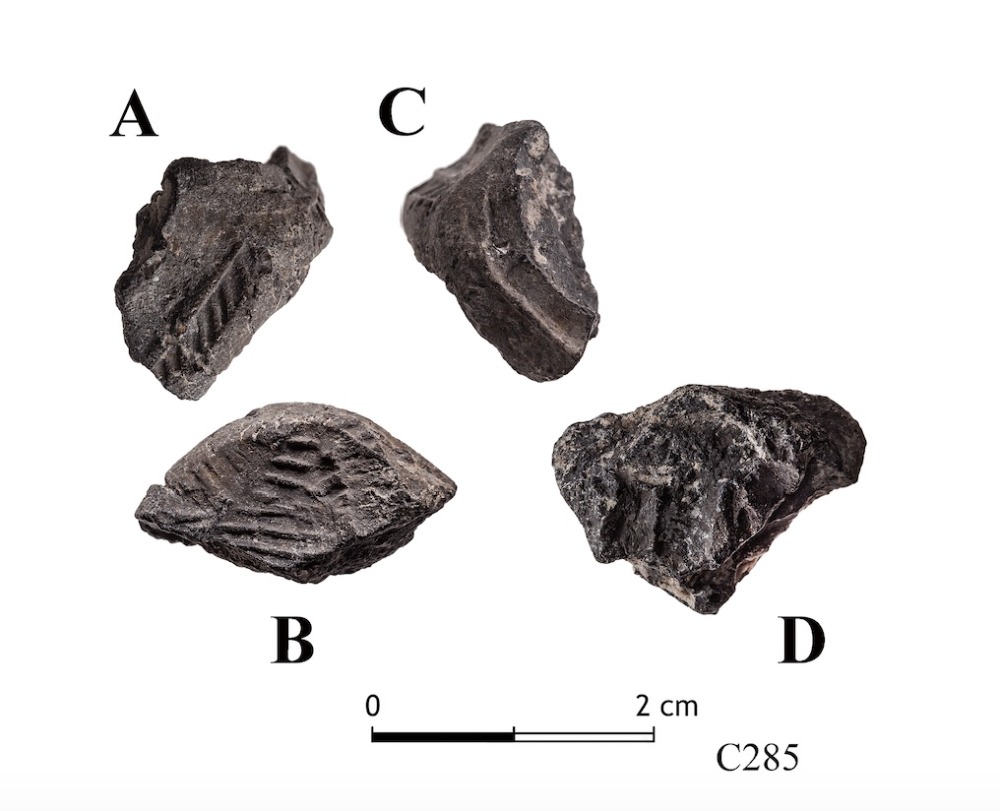7,000-year-old clay seal confirms a centre of prehistoric trade
Categories: Nálezy nejenom s detektorem na blízkém východě
Archaeologists excavating the prehistoric Israeli village of Tel Tsaf in the Beit She'an Valley have discovered a 7,000-year-old clay seal with geometric patterns. It is the oldest of its kind to date in the southern Levant, indicating that Tel Tsaf was a busy administrative and commercial crossroads. It may have been used to mark a shipment or to seal a warehouse, such as a grain silo.
"Between 2004 and 2007, about 150 clay seals were discovered at the site of the village, but they bore no designs or markings; they were essentially small lumps of undecorated clay," Amanda Borschel-Dan told the Times of Israel. The sealer's owner probably used them to mark a shipment or to seal the entrance to a warehouse - a grain silo. If the seal was broken, it was immediately clear that someone unauthorized had entered the silo.
"Even today, similar types of seals are used to protect against tampering and theft," he said in hism statement, study co-author Yosef Garfinkel, an archaeologist at the Hebrew University of Jerusalem who led the research with two archaeology students. "It turns out that this principle was used by landowners and local administrators to protect their property as early as 7,000 years ago," he added.
According to the published study, the seal dates back to the Middle Chalcolithic period (between 5,200 BC and 4,500 BC). It was originally part of a larger object. One of the sides of the fragment bears a long longitudinal line with shorter intersecting lines diagonally, the other parallel lines are zigzag. According to Rossella Tercatin of the Jerusalem Post, the fact that the seal contains multiple impressions is very interesting. It was probably signed by two different people who were jointly sealing a transaction.
The age and design of the artifact suggest that Tel Tsaf may have been one of the earliest trading hubs in the southern Levant. "The material used to make the seal came from a site more than 10 km away from the settlement. Potters often travel several kilometers to get good quality clay from a rich deposit," study co-author David Ben-Shlomo of Ariel University told the Times of Israel. He added: "It could also suggest that Tel Tsaf may have been a central point where neighboring smaller settlements brought their goods."
"There is no other prehistoric site anywhere in the Middle East that reveals such evidence of long-distance trade in exotic items as we have found at this particular site," says Dr. Garfinkel said in a statement. In the past, seals from around 2,600 years ago, for example, have been found in the Jerusalem Temple of Solomon in this area. These also bear names and sometimes depict biblical figures. However, the Tel Tsaf seal bears geometric features that predate the development of writing.
Excavations at Tel Tsaf have previously revealed pottery, beads, shells, animal remains, decorative stones and a clay figure resembling a dog. Other artifacts discovered in the village also attest to a thriving exchange network; from Egyptian shells to Turkish obsidian to Mesopotamian pottery. In 2014, archaeologists unveiled a 7,000-year-old copper awl, making it one of the first metal objects in the Middle East. According to scientists, Tel Tsaf is a unique site with regard to the accumulation of wealth, advanced storage methods and the use of early bureaucracy.
Roman Nemec
Sources: timesofisrael.com, smithsonianmag.com, livescience.com

The Copper Shield

A modern reconstruction of a limestone seal - one of the designs of the seal found

Excavations at Tel Tsaf - circular silos and rectangular dwellings

Tel Tsaf seal
The article is included in categories: